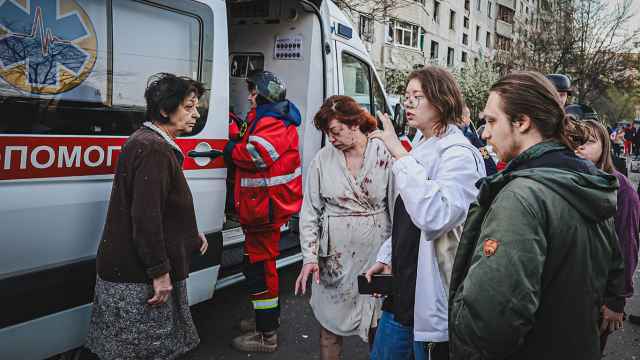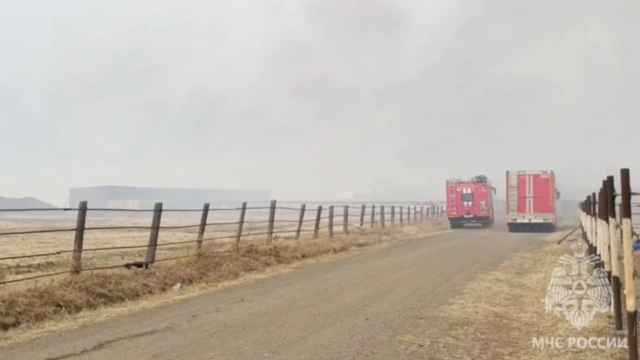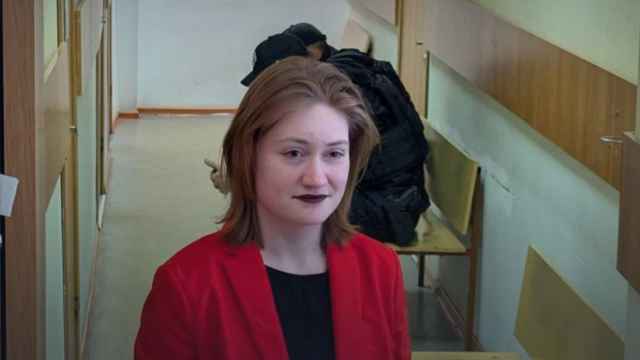No one knows yet how and when what Harvard professor Ken Rogoff calls the “great contraction” will end. Some predict a new global recession starting with Europe and the United States. Perhaps the financial crisis that began with the collapse of Lehman Brothers, the Wall Street bank, three years ago this week is about to claim another victim soon, very likely Greece. Even the normally cautious International Monetary Fund has not been mincing its words with Christine Lagarde, the new managing director, saying we are entering a dangerous new phase.
How can Russia, which is so vulnerable to oil price changes and capital flow surges, try to steer a steady policy course in the face of such uncertainty? There are no easy answers.
It seems that the usual recourse to international policy coordination has faded from view, with each country trying to find its own solution. Witness the top-level bickering among the European governments, within the Group of Seven, or last week’s unilateral action by Switzerland to counter a speculative surge of capital seeking a safe haven by vowing to cap the bilateral exchange rate with the euro.
Russia, unlike fellow BRIC members Brazil, India and China, has no capital account restrictions, and the ruble is completely convertible. This is probably the main reason why the Russian economy suffered such a devastating blow relative to the others as the financial crisis erupted in late 2008. Credit fled banks almost everywhere, but in Russia it also left the country. In the other major emerging market economies, the money was forced to stay in the country because of capital controls.
It would seem that, short of backtracking on its commitment to an open economy, Russia really has no choice but to create buffers by pursuing macroeconomic policies that should be even more prudent than usual. In some ways, it has. Foreign exchange reserves, having fallen to almost $380 billion in early 2009, are now at $545 billion. A budget deficit of almost 6 percent of gross domestic product in 2009 is likely to be about in balance this year, admittedly thanks in part to higher oil prices. And, importantly, gross public debt is less than 10 percent of GDP this year, according to the IMF’s latest published data, whereas it stands at almost 18 percent in China, 80 percent in Germany and 142 percent in Greece.
In one area in particular, and despite progress, the effort is insufficient. This has to do with inflation.
After averaging 8.8 percent in 2009 and again in 2010, the year-on-year increase in the Russian consumer price index registered 9 percent to 10 percent between January and July 2011. Only last month did the rate of inflation decline to 8.2 percent, and it is likely to decline further to about 6.5 percent by year-end.
But before breaking out the champagne that Russia will have achieved its lowest annual inflation rate in post-Soviet times, it has to be stressed that this is still just not good enough — not in this volatile global environment.
The problem is that Russia’s inflation rate is still much too high in the context of a global low inflation environment. Over time, the ruble is losing the competitive margin it gained after its 40 percent slump at the beginning of the financial crisis three years ago. One has to look no further than the rate at which imports are being sucked into the Russian economy — at an estimated 40 percent growth this year, which is clearly unsustainable without hollowing out what remains of the non-energy real sector.
If an inflationary wedge continues vis-a-vis Russia’s main trade partners, the time will come when an overvalued ruble comes under speculative attack, joining the other cases of financial fragility that have been too much in evidence lately.
Before suggesting a policy response, we need to understand why Russia continues to have such stubbornly high rates of inflation relative to others.
Analysts everywhere, in seeking to explain inflation, write reams about structural labor markets and wage conditions, infrastructure bottlenecks, industrial monopolies, as well as excess demand, say, stemming from too much government spending. All of these issues may matter at the margin in Russia, although clearly there is plenty of economic slack. In fact, although monetarism is no longer fashionable, it seems pretty hard to explain Russia unless you turn to the money numbers.
And this is the case not just in Russia but in the other BRIC countries as well, as UBS analyst Jonathan Anderson recently observed in noting that inflation in emerging markets is a monetary phenomenon. What matters is money growth that is excessive relative to demand. The point is simple: Russian inflation was running at almost 10 percent through July because the stock of money was expanding at more than 20 percent on a year-on-year basis. Inflation in other major emerging markets like China, India and Brazil was lower because broad money was growing much more slowly in their economies.
By this reasoning, China had such low inflation over the past decade because it did not print much money. Average broad money growth less real GDP growth was around 7 percent in China, compared with 10 percent in India, 13 percent in Brazil and 25 percent in Russia, which essentially explains why the average annual Chinese inflation rate was 3 percent in the decade, compared with 6 percent in India, 7 percent in Brazil and 13 percent in Russia.
For Russia, broad money rose 22 percent in the year to August. With real GDP growth of less than 5 percent in 2011, it is hardly surprising that inflation should still be so high. In fact, the rapid growth of the money stock would be consistent with an even higher inflation rate, but presumably the difference reflects a higher demand for rubles generally. In a global crisis precipitated by a Greek default or some other external event, ruble demand could plummet as investors and savers seek safe havens such as the U.S. dollar and even gold.
Like other countries, there is no inherent reason that Russia should not target an inflation rate of about 2 percent. It is a policy decision. The Central Bank must tighten its monetary policy accordingly, or Russia will remain exposed when — not if — the next global financial crisis erupts.
Martin Gilman, former senior representative of the International Monetary Fund in Russia, is a professor at the Higher School of Economics.
A Message from The Moscow Times:
Dear readers,
We are facing unprecedented challenges. Russia's Prosecutor General's Office has designated The Moscow Times as an "undesirable" organization, criminalizing our work and putting our staff at risk of prosecution. This follows our earlier unjust labeling as a "foreign agent."
These actions are direct attempts to silence independent journalism in Russia. The authorities claim our work "discredits the decisions of the Russian leadership." We see things differently: we strive to provide accurate, unbiased reporting on Russia.
We, the journalists of The Moscow Times, refuse to be silenced. But to continue our work, we need your help.
Your support, no matter how small, makes a world of difference. If you can, please support us monthly starting from just $2. It's quick to set up, and every contribution makes a significant impact.
By supporting The Moscow Times, you're defending open, independent journalism in the face of repression. Thank you for standing with us.
Remind me later.





